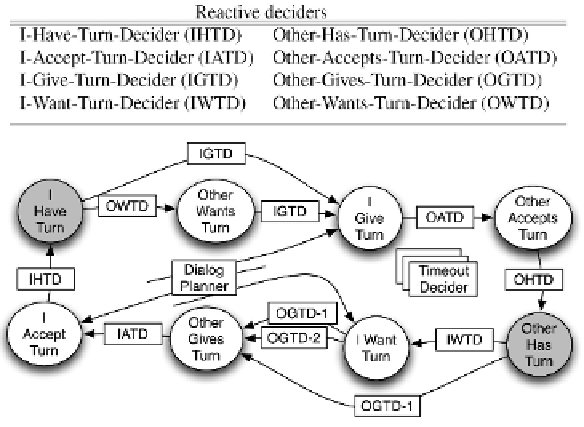Graphics Reference
In-Depth Information
Figure 4.
The heart of turn-taking control in the system consists of a set of eight semi-global
context-states and 11 deciders. In context-state I-Have-Turn (IHT), both I-Give-Turn-Decider
(IGTD) and Other-Wants-Turn-Decider (OWTD) are active. Unlike other modules, the Dialog
Planner (DP) can transition independently from the system's current context-state and
override the decisions from the reactive deciders. A Timeout-Decider handles transitions
if one of the negotiating contexts is being held unacceptably long (but its transitions are
not included in this diagram; also not shown are which modules are active during which
contexts).
to Other-Gives-Turn after a two-second silence). If the agent waits too
long, and the speaker does not continue, there will be an unwanted
silence; if he starts too soon and the speaker continues speaking,
overlapping speech will result. We solve this by having OGTD-2 use
information about past prosody, which occurs right before the latest
silence, to select an optimal silence tolerance window (STW), as will
now be described in detail.
4. The Learner
The learning mechanism is implemented as an independent component
(Learner module) in the modular architecture described above. It is
based on the Actor-Critic distribution of functionality (Sutton and
Barto, 1998), where one or more actors make decisions about which
actions to perform and a critic evaluates the effect of these actions
on the environment; the separation between decision and action is
important because in our system a decision can be made to act in the
future. In the highly general and distributed learning mechanism we
have implemented, any module in the system can take the role of an
actor by sending out decisions and receiving, in return, an updated


Search WWH ::

Custom Search